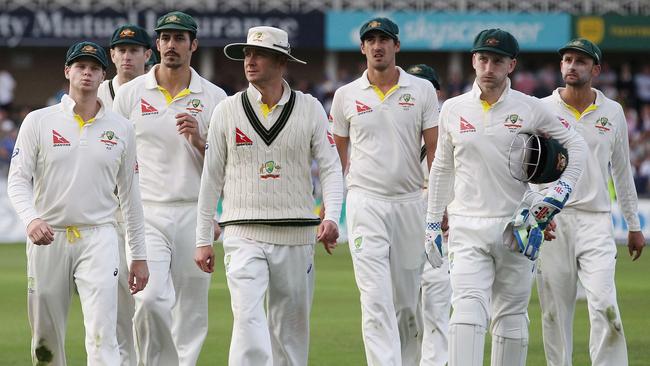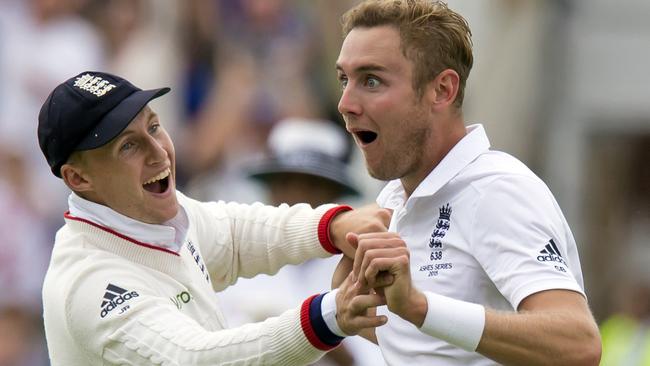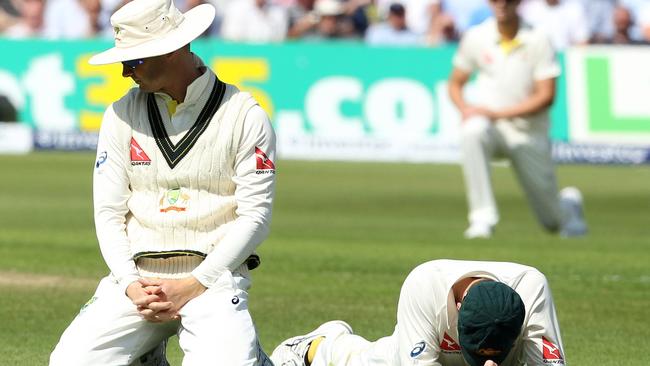
What’s the difference between the Australian Test team and the Australian T-20 team? Not much, to be honest. The T20 boys tend to bat a bit longer but what’s nine balls between mates?
The batsmen in either form of the game tend to throw their hands through the line of the ball. This is considered a sound tactic in the hit-and-giggle business but in a Test match on a green, seaming wicket, not so much.
If you, like me, sat through Australia’s 111-ball dismissal last night for a measly 60 runs (extras top-scored with 14) and then lapsed into an unsettled, broken slumber while Joe Root plundered a bowling attack that bowled good areas too seldom, you will be feeling bereft and hollow.
Going on a quick scan of my vital signs this morning it feels like I am suffering a force-nine hangover albeit without the blurry knowledge of the fun and frivolities the night before. Sad to say, I watched the carnage unfold, shocked, stunned and dangerously sober.
The errors started before a ball was bowled in anger. At very least the selectors, Darren Lehmann, Mark Waugh, Trevor Hohns and chairman Rod Marsh, seemed to have picked a team on the basis of Australia winning the toss and bowling.
The selectors had decided to bolster the batting by dropping one Marsh (Mitch) for another (Shaun). Australia went in to the crucial fourth Test at Trent Bridge on a seaming wicket without an all-rounder and a dedicated fifth bowling option.
Selection is always easy in hindsight but there seemed no sense in it. Adding a batsman was an exercise in defence, if not an outright statement of meek surrender when Australia needed to win the game.

Former Australian fast bowler and cricketing curmudgeon Rodney Hogg tweeted up the paucity of logic in it.
Of the three quicks selected, the two remaining Mitchs — Johnson and Starc — are left-arm strike bowlers who rely essentially on movement through the air while the sole right-arm quick, Josh Hazelwood, has struggled with form and confidence.
Peter Siddle, a master of bowling line and length and who would have drooled at the prospect of bowling on the green-tinged wicket, was left out. The selected spinner, Nathan Lyon, could not be used as a workhorse as he would get little assistance from the wicket at least in the first three days of the game and now we know that by then it should be done and dusted.
Chris Rogers fell for a duck on the third ball of the Test — the first time he hasn’t troubled the scorers in his 46 Test innings (a record). It was an ominous sign because his resolve has got Australia through some ordinary starts in the past.
We didn’t have time to ponder the consequences of Rogers being back in the pavilion when Smith’s three-ball cameo came to an end. Stuart Broad had 2/6 off his first over. The wicket of Rogers brought up his 300th Test wicket, placing the tall, blonde fast bowler in the rarefied air of the greats.
It would only get better for him and worse for Australia.
Warner copped a good one second ball and was caught behind off the bowling of Mark Wood. Australia was 3/10.
Most people would have expected a diligent exercise in defensive technique from the middle order. Instead, after a mix of millionaire shots, extravagant back swings, hard hands and wrists, Australia was 6/29 off just 33 balls.
We simply can’t say if Adam Voges is in form or not. He hasn’t been at the crease long enough. Shaun Marsh, like Stephen Smith, threw his hands at a ball with bat some distance ahead of body. His nick to Ian Bell at second slip was as poor as it was predictable.
In that first half an hour Broad had the ball hooping both ways through the air and nipping off the track. He is, of course, the cricketer Australians love to hate. It’s time to forget the silly parochialism that casts him as an arch villain. He is a magnificent bowler and from all reports from his time as a callow youth at Hopper’s Crossing Cricket Club in Melbourne’s west, a very decent bloke.

By the time Australia was all out, Broad had bowled 57 balls, 42 of them dots, leaked a couple of boundaries and had the startling figures of 8 wickets for 15 runs, placing him fourth on the list of best bowling figures in an innings in Ashes Tests.
That he spent a great many of his wicket celebrations in mouth agape shock says a great deal. Great bowling? Yes. Ordinary batting? That, too, combined with some more than handy close catching — especially from Ben Stokes, who took a blinder to dispose of the hapless Voges.
What is to be done now? Well, the eternal optimists might point to an England lead somewhere around the 300 mark. From there, Australia gets in, makes 500 and it is game on. Alas, this is not a deck where 500 runs can be expected even from a side boasting batsmen of sounder technique and better form.
The glass-half-full blokes should take a big swig. This Test is done and England will have the Ashes in their keeping sometime around Sunday before lunch, if not earlier.
Should Rod Marsh be sacked? Should Darren Lehmann be sent to Coventry? Should Michael Clarke resign?
Maybe we all should resign, pack it in and pretend we’re New Zealanders for a couple of months. It might make the Rugby World Cup more bearable, for a start.




